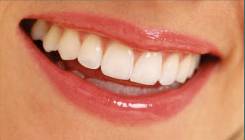
CROWN and BRIDGE
In dentistry, crown and bridge (Restorative Dentistry) refers to the restoration of natural teeth that have been damaged, decayed or lost. Once your dentist has examined your teeth and has evaluated your dental and medical history, he/she will be ready to provide a diagnosis, and treatment options. A crown may be constructed to restore an individual damaged tooth back to it's original form and function, while a bridge may be utilized to replace one or more teeth. These restorations are cemented onto the teeth and are referred to as "fixed" dentistry as opposed to a restoration of missing teeth with a removable appliance or partial denture..
A crown is fabricated using an indirect procedure. The tooth is modified and prepared by using special insturments and a copy of the tooth preparation is made is made by taking an impression The crown is then "permanently" cemented onto your tooth preparation. A fixed bridge refers to a prosthesis that will span the area of a missing tooth, known as a pontic. The procedure involves a local anesthetic and the preparation of two or more abutment teeth. Once this has been accomplished, an impression is made and sent to the dental laboratory for fabrication of your new tooth. This procedure will take five to ten days and will encompass two to four appointments. (A crown procedure takes two to three office visits.)
The following is a brief description of how a crown will be made:
- Upon arriving to the laboratory, your impression is cleaned (sterilized).
- Powdered stone is mixed with water and poured into your impression, which once set hardens into a stone cast of your upper/lower teeth. The casts are connected on an apparatus called an articulator that mimics your jaw motion.
- Using a bunsen burner, the dental technician melts wax and applies it to the prepped tooth stump. This process is called fabricating a coping or framework (if a bridge) which supports the tooth colored material called porcelain. The wax coping is invested in high heat stone, burned out in an oven and cast into metal. This is a similar procedure that a jeweler might use when making a ring.
- After the metal has been cast, the technician will use a variety of high and slow speed drills to contour the metal.
- The metal is then ready to be prepared to receive porcelain. Since porcelain is very clear, the silver gray colored metal needs to be masked out. This procedure is referred to as opaquing, or masking out the metal.
- Porcelain powder is mixed with water and applied by brush to the opaqued metal understucture. By using the casts that have been joined, the dental technician will be able to reproduce a lifelike copy of the original tooth.
- The porcelain build-up is fired in a ceramic oven at 1800 degrees. Using various diamond and carbide drills, the final contours are established.
- The porcelain-fused-to-metal restoration is then colored to the patients specific shade and glazed to render an enamel-like finish.











